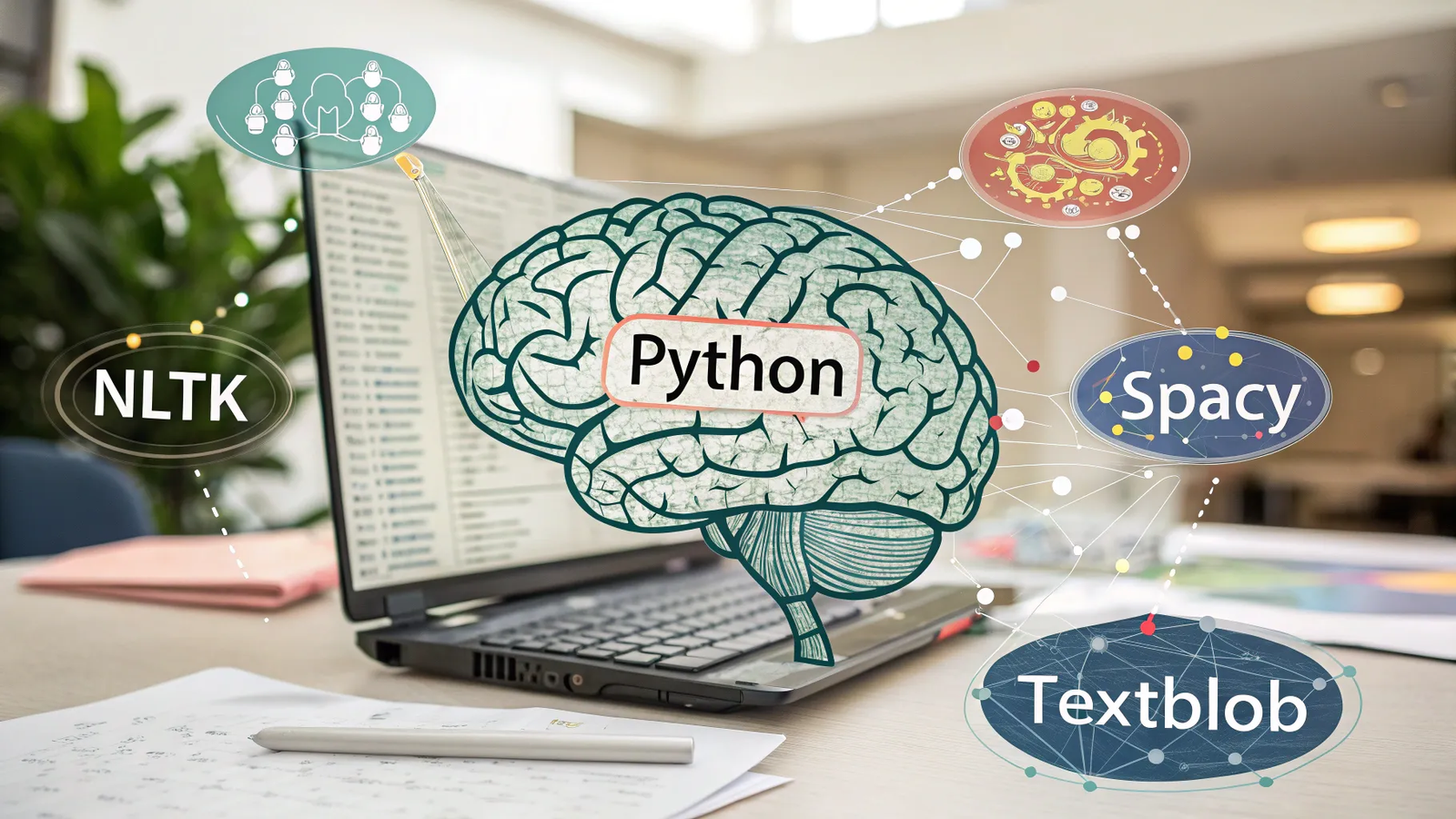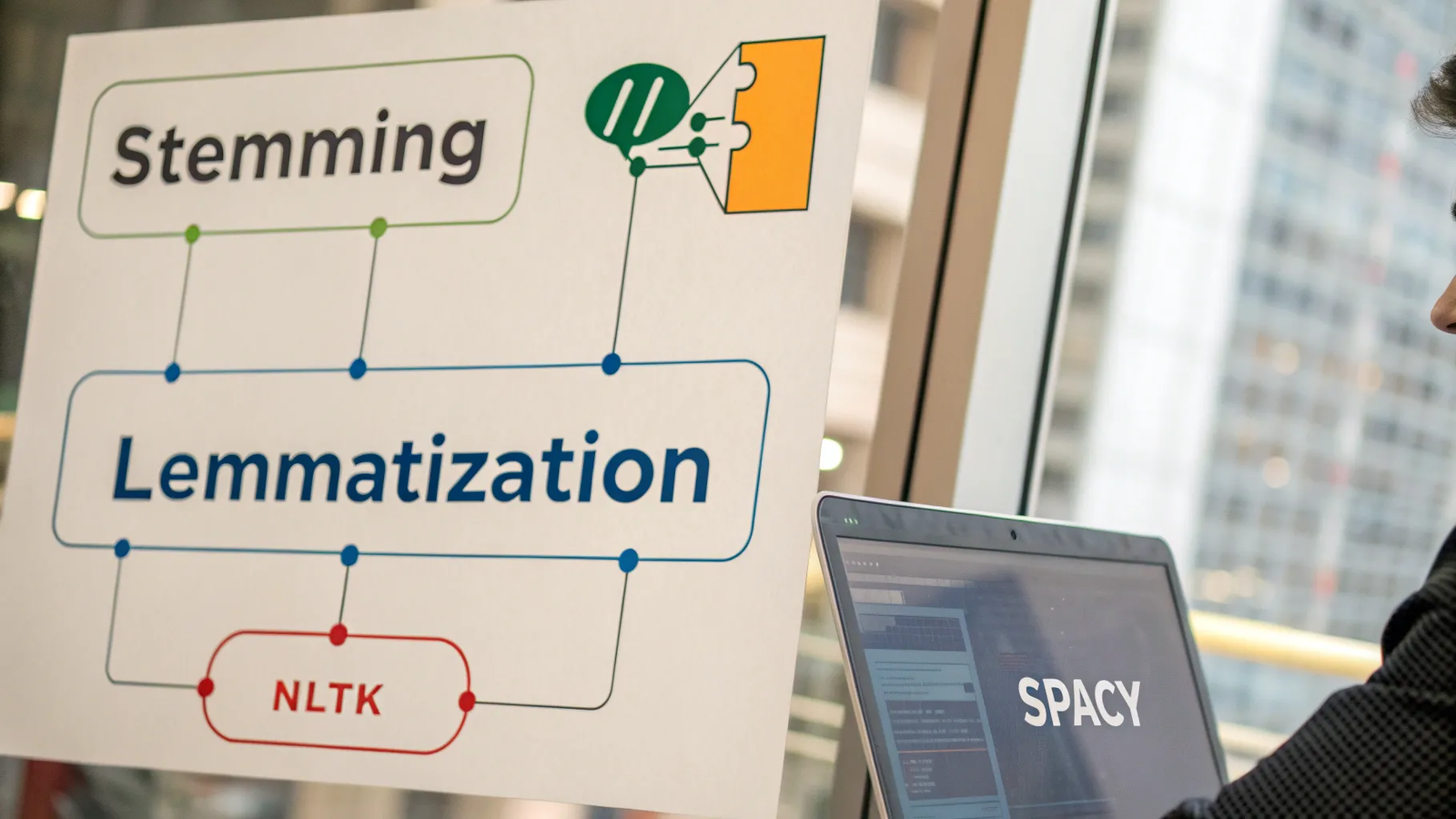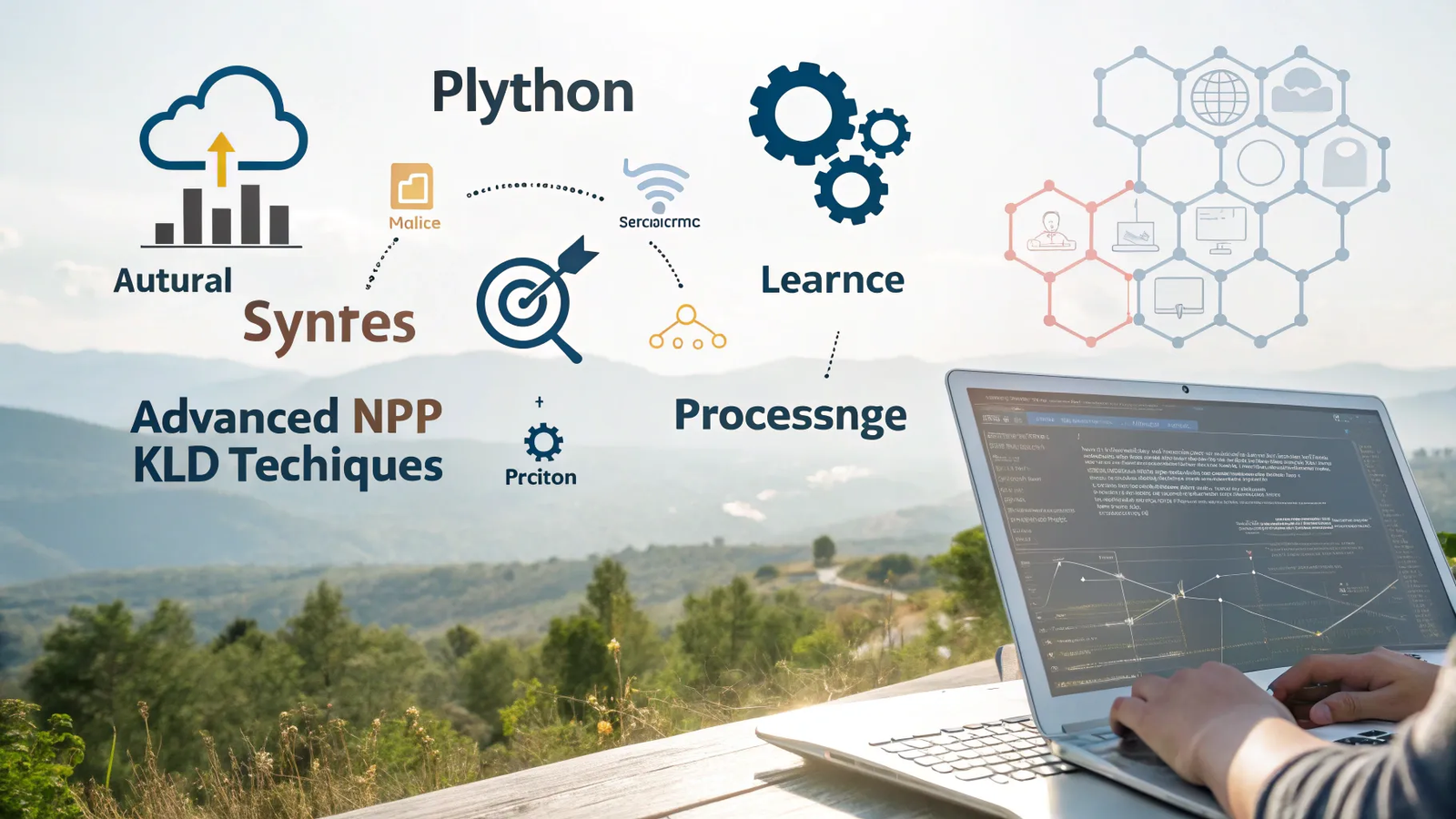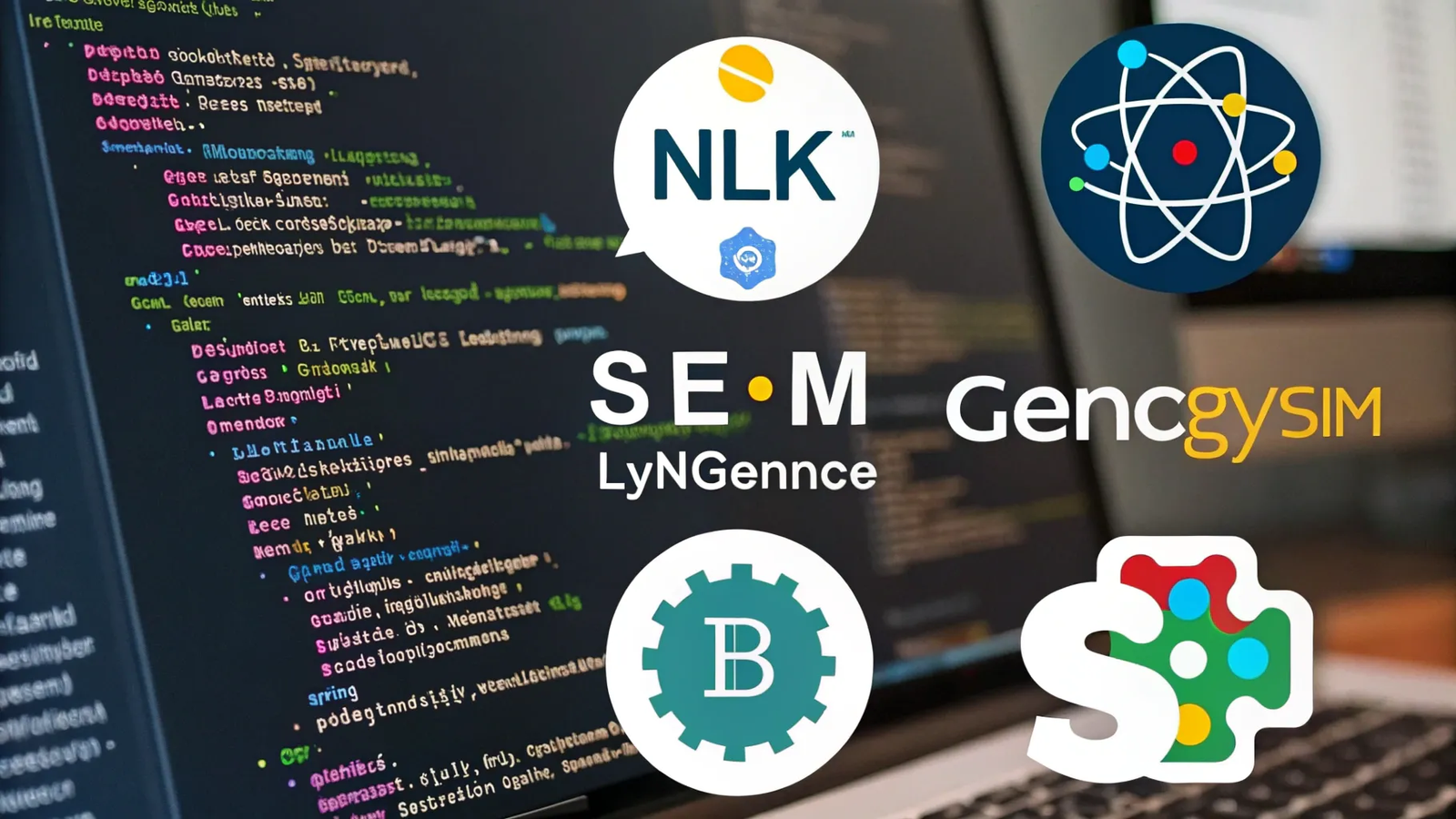Ever wish you had a secret weapon to make your website stand out on Google? What if I told you that Python, a programming language, could be that weapon? You might think Python is just for tech wizards, but it’s actually a fantastic tool for boosting your website’s visibility and attracting more visitors.
Imagine being able to truly understand what your audience wants and optimize your content so search engines love it. This isn’t just a fantasy; it’s totally doable with Python and something called Natural Language Processing (NLP).
Think of it like this: Python helps you dig deep into your content, discover hidden connections, and fine-tune everything for what we call semantic SEO. It’s about getting your content to speak directly to what people are searching for, not just stuffing it with keywords. Ready to transform your SEO game? Let’s dive in!
Python for Understanding Language (NLP)
Python is incredibly powerful for Natural Language Processing (NLP), which is basically teaching computers to understand human language. Its simplicity and massive collection of tools (called libraries) make it perfect for NLP tasks. When you can process and understand language data, you get a huge advantage in semantic SEO. By using Python, businesses can make their content much better and easier for search engines to find.
Awesome Tools (Libraries)
Python has tons of great tools for NLP. Here are a few popular ones:
- NLTK (Natural Language Toolkit): A classic choice with many tools for processing and analyzing text.
- SpaCy: Super fast and efficient for handling NLP tasks, especially when you need performance.
- TextBlob: Makes common text operations simple and straightforward.
These libraries help with tasks like breaking text into individual words or figuring out the mood of a piece of writing.
Basic Techniques
Before you can analyze text, you need to prepare it. Here are some fundamental steps:
- Tokenization: This is like breaking a sentence into individual words or phrases. It helps make sense of the text’s structure.
- Lemmatization: This process converts words to their base form (e.g., “running,” “ran,” and “runs” all become “run”). It helps reduce complexity when analyzing text.
- Sentiment Analysis: This figures out the emotion behind text – is it positive, negative, or neutral? Python’s tools make these tasks surprisingly easy.
Getting Your Text Ready
Text processing is a super important step in NLP and semantic SEO. It turns raw, messy text into a neat, organized format that’s much easier to analyze. Python offers powerful tools to handle these tasks efficiently.
Breaking It Down: Tokenization
Tokenization is the first step. It chops your text into smaller pieces called “tokens.” These tokens can be words, phrases, or even symbols. This makes the text much easier to work with. Both NLTK and SpaCy are excellent at this, even with tricky sentences.
Removing the Fluff: Stop Words Removal
Stop words are common words like “is,” “the,” and “on” that usually don’t add much meaning to text analysis. Removing them helps you focus on the really important words. NLTK comes with a list of stop words, and you can even add your own! This step makes your text clearer and more relevant for analysis.
Finding the Roots: Stemming and Lemmatization
Stemming and lemmatization both simplify words to their base forms.
- Stemming is a quicker process that simply chops off word endings (e.g., “running” becomes “runn”).
- Lemmatization is more sophisticated; it considers the word’s actual meaning and context (e.g., “better” becomes “good”).
Both NLTK and SpaCy support these processes. You’ll choose the one that best fits what you’re trying to achieve with your analysis.
Advanced NLP for Smarter SEO
Advanced NLP techniques, powered by Python, are changing the game for SEO. By using smart machine learning, you can optimize your website’s content to not only rank higher but also genuinely connect with your audience. Imagine truly understanding the ins and outs of human language and using that knowledge for your SEO.
I once struggled to figure out what topics my audience was truly interested in. Advanced NLP helped me uncover those insights, giving my content strategy a massive boost. If you’re ready to dig deeper, here’s how Python can be your best friend in mastering NLP for SEO.
Spotting Key Information: Named Entity Recognition (NER)
Named Entity Recognition (NER) is about finding and classifying key pieces of information in text. This includes things like people’s names, company names, or locations. Using Python tools like SpaCy or NLTK, you can easily pull these out of your content.
NER can help you see which important things you mention most often. Are you always talking about a specific brand or city? Highlight it in your meta descriptions and headings for better visibility in search results.
Feeling the Vibe: Sentiment Analysis
Sentiment Analysis measures the emotion behind text. Are your readers happy, sad, or annoyed? Python’s TextBlob or Vader tools can help you understand these feelings. This insight can guide you to adjust your tone or focus on topics that get a positive response from your audience.
Imagine knowing that your latest blog post truly resonated with your readers. You could then create more content like it, building stronger engagement and loyalty.
Uncovering Themes: Topic Modeling
Topic Modeling helps you discover the hidden main topics within your content. Using tools like Gensim, you can categorize your text into different themes. This shows you what your content is really about, beyond just a few keywords.
Using Topic Modeling can guide you in refining your content strategy. You might find out your audience is more interested in “sustainable living” than just “technology.” How can you shift your content to meet those interests?
By using these advanced NLP techniques, you’re not just optimizing for search engines; you’re creating content that genuinely speaks to your audience’s needs and interests. Ready to take your SEO strategy to the next level with Python?
Semantic SEO: Understanding the Meaning
Understanding semantic SEO is vital for improving your website’s visibility. It’s all about focusing on the context and meaning behind what people search for. With semantic SEO, your content perfectly matches what users are looking for, not just a list of keywords. This makes your website more useful for visitors and more relevant to search engines.
Smart Search: Semantic Search
Semantic search focuses on what users mean when they type something into Google, not just the exact words. It tries to understand the context of their query to give them the most accurate and relevant results. Search engines like Google use semantic search to understand user needs, considering synonyms, related terms, and the overall context. This makes search results much more helpful. Embracing semantic search improves your content’s visibility and keeps people on your site longer.
Winning SEO Strategies
To get better results, weave semantic SEO into your strategies.
- Start by creating truly valuable content.
- Use natural language that flows well and matches what users are looking for.
- Sprinkle in synonyms and related terms throughout your content. This helps search engines grasp the full context of your writing.
- Improve your site’s technical structure with schema markup. This provides extra, structured information to search engines about your content.
- Optimize for voice search by using more conversational phrases, as more and more people are using voice assistants.
- Regularly update your content to keep it fresh and relevant.
Bringing NLP and SEO Together
Python helps bring NLP and SEO together by analyzing keywords and content. NLP tools can figure out what users are truly looking for and help you optimize for semantic search. This approach makes your website more visible and attracts more visitors.
Combining NLP with SEO can totally change how you do digital marketing. By mixing Natural Language Processing (NLP) with Semantic SEO, you can make your content much more relevant and high-quality. This powerful combination helps you not only understand your audience’s language but also optimize your content effectively for search engines.
Keyword Deep Dive
Finding the right keywords is super important. With NLP, you can analyze huge amounts of text to discover the most relevant keywords for your specific niche. Instead of just using old-school keyword tools, NLP helps you understand context, synonyms, and different ways people might search. This makes your keyword strategy much stronger. Ever wondered why some keywords work better than others? NLP helps answer that by recognizing what users intend and how they feel. This means you can target keywords that not only bring traffic but also truly align with what your audience cares about.
Content Perfection
Creating content that truly connects with your audience is a game-changer. NLP can help optimize your content by looking at sentence structure, tone, and how easy it is to read. You can make sure your content isn’t just full of keywords, but also genuinely enjoyable for readers. Imagine your content speaking directly to what your audience needs! NLP lets you fine-tune your writing style, making it more engaging and conversational. This way, you’re not just hitting SEO goals but also building a real connection with your readers. Plus, using NLP tools, you can spot where your content is missing information. This insight helps you create content that fills those gaps, boosting your site’s authority and relevance. Ready to transform your content strategy with NLP and Semantic SEO?
Real-World Success Stories
Python is fantastic for boosting Natural Language Processing (NLP) and Semantic SEO. Real-world examples show its power in analyzing text and improving how easily your site is found on search engines. Using Python tools turns raw data into smart insights, making your content more relevant and engaging for users.
When you think about how Python helps with NLP and Semantic SEO, it’s natural to wonder how all this theory actually works in practice. Case studies offer fascinating glimpses into Python’s real-world uses in these areas. These stories show just how transformative Python can be, offering practical ideas you can use for your own projects.
Winning Examples
Several companies have used Python to seriously improve their SEO. For example, a digital marketing agency used Python to analyze how users search. They uncovered specific, niche keywords that nobody had noticed before. This led to a huge increase in organic traffic, showing how important it is to dig deeper into your data.
Another example is a tech startup that used Python for sentiment analysis. By understanding how customers felt, they tailored their content to match those emotions. This personalized approach boosted engagement and conversions, proving how valuable it is to align your content with your audience’s feelings. These cases highlight how flexible Python is. Have you thought about how Python could reveal hidden opportunities in your own SEO efforts?
Key Takeaways
From these success stories, one big lesson stands out: always keep learning! The digital world is always changing. Regularly updating your Python skills ensures you stay ahead. You also need to focus on data quality. The insights you get are only as good as the data you put in. Making sure your data is clean and relevant is crucial for effective NLP. Finally, working together is key. Collaborating with data scientists or SEO experts can greatly improve your Python projects. Their knowledge can help you refine your strategies and hit your goals. What small changes could you make today to use Python more effectively in your SEO strategy?
Tools and Where to Learn More
Python offers a variety of tools for NLP and semantic SEO. These tools help automate tasks and pull out valuable insights. They make it easier to understand what users want and how to best optimize your content. With the right resources, even beginners can boost their skills.
Free Tools You Can Use (Open-source)
Open-source tools are great because they’re free and you can use them for learning and development:
- NLTK: A popular choice for text processing, with tools for breaking down text, tagging parts of speech, and parsing sentences.
- SpaCy: Another powerful tool for NLP tasks, offering ready-to-use models for many languages.
- Gensim: Handy for topic modeling and finding how similar documents are to each other.
These tools make complicated NLP tasks much simpler.
Keep Learning
Learning never stops in this field!
- Online courses offer structured ways to learn. Websites like Coursera and Udemy have great courses on Python and NLP.
- You’ll find many tutorials online for hands-on practice.
- Books also provide in-depth knowledge. “Natural Language Processing with Python” is a highly recommended read.
- Joining online forums helps you learn from others. Platforms like Stack Overflow offer support and solutions to common problems.
Common Questions About Python for SEO
What is NLP in Python?
NLP, or Natural Language Processing, is about using Python to analyze and understand human language. Python offers powerful tools (libraries) like NLTK and SpaCy for tasks like figuring out the mood of text (sentiment analysis), breaking text into words (tokenization), and finding important names or places (entity recognition). Python’s simplicity and many available resources make it perfect for NLP.
How does Python help with Semantic SEO?
Python helps with semantic SEO by analyzing your content to see how relevant it is and what its true meaning is. It uses libraries to process keywords and phrases, making it easier for search engines to understand your content. Python scripts can automate content analysis, making sure your writing matches what people are truly searching for. This helps you create content that’s great for both users and search engines.
Which Python tools are best for NLP?
Popular Python tools (libraries) for NLP include NLTK, SpaCy, and TextBlob.
- NLTK provides a comprehensive set of text processing tools.
- SpaCy is known for its fast and efficient NLP abilities.
- TextBlob simplifies common NLP tasks. These tools are user-friendly and widely used for various language processing needs.
Can Python automate keyword research?
Yes, Python can automate keyword research! By pulling data from search results and analyzing trends, Python scripts (using libraries like BeautifulSoup for web scraping and Pandas for data handling) can extract and organize keyword information. This automation saves a lot of time and gives you insights into high-performing keywords and search patterns, leading to much better SEO strategies.
Your SEO Journey Starts Here
Python is a fantastic tool for taking your NLP and Semantic SEO efforts to the next level. It makes analyzing large amounts of data easy and efficient. By using Python scripts, you can genuinely enhance your SEO strategy, understand your audience’s needs better through data insights, and improve your website’s content with smarter keyword choices.
Don’t feel overwhelmed! Start small, experiment with the tools, and learn as you go. Libraries like NLTK and SpaCy are there to support your projects. Integrate Python into your daily workflow to see better results. Keep exploring and refining your approach, and stay updated with the latest Python libraries. Your efforts will truly pay off with improved search rankings and a stronger online presence.






